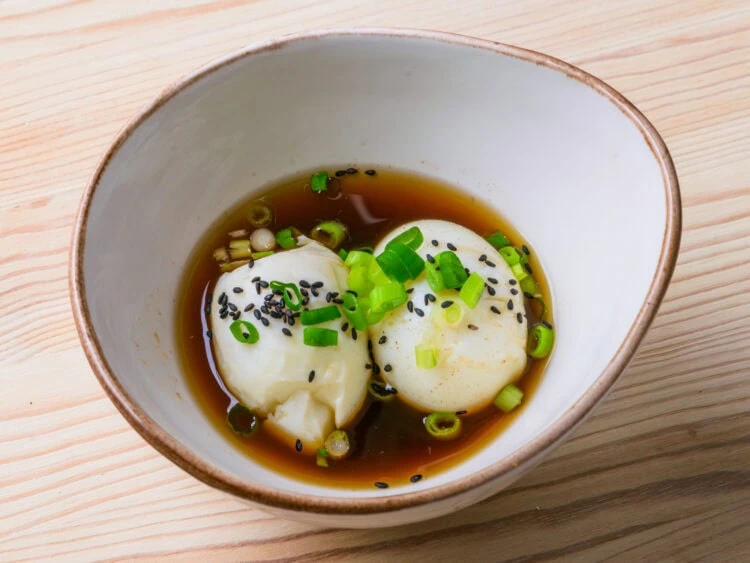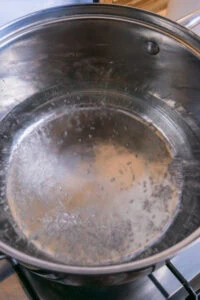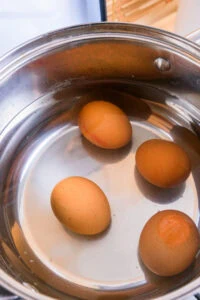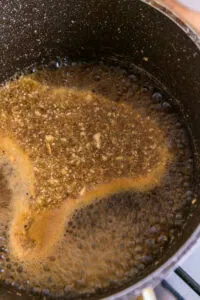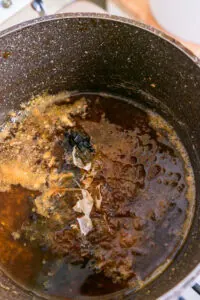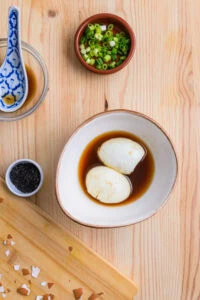Silky and satisfying eggs slowly cooked according to the traditional Japanese method… A signature dish of Japanese street food!
Japan is particularly known for its thousands of natural hot springs. There, they are called “Onsen”. While many visitors appreciate them for their therapeutic and relaxing effects on the body, others know that they have inspired more than a few in the kitchen.
Add eggs to the equation, and you get Onsen Tamago, which is pure delight. I invite you to discover a typical recipe of Japanese cuisine, you will never poach eggs the classic way again.
What is Onsen Tamago?
Onsen Tamago (温泉卵) can be translated as “hot spring eggs”. They are also known as “Ontama”. Alright, but what is it exactly? Onsen Tamago is originally an egg slowly poached in its own shell in hot volcanic spring water.
It’s not just a poached egg like the one found on top of Gyudon, it follows a specific cooking method. The white is smooth and soft, while the yolk is half-cooked, all accompanied by a broth made of dashi, soy sauce, mirin, and garnished with green onions or sometimes mitsuba.
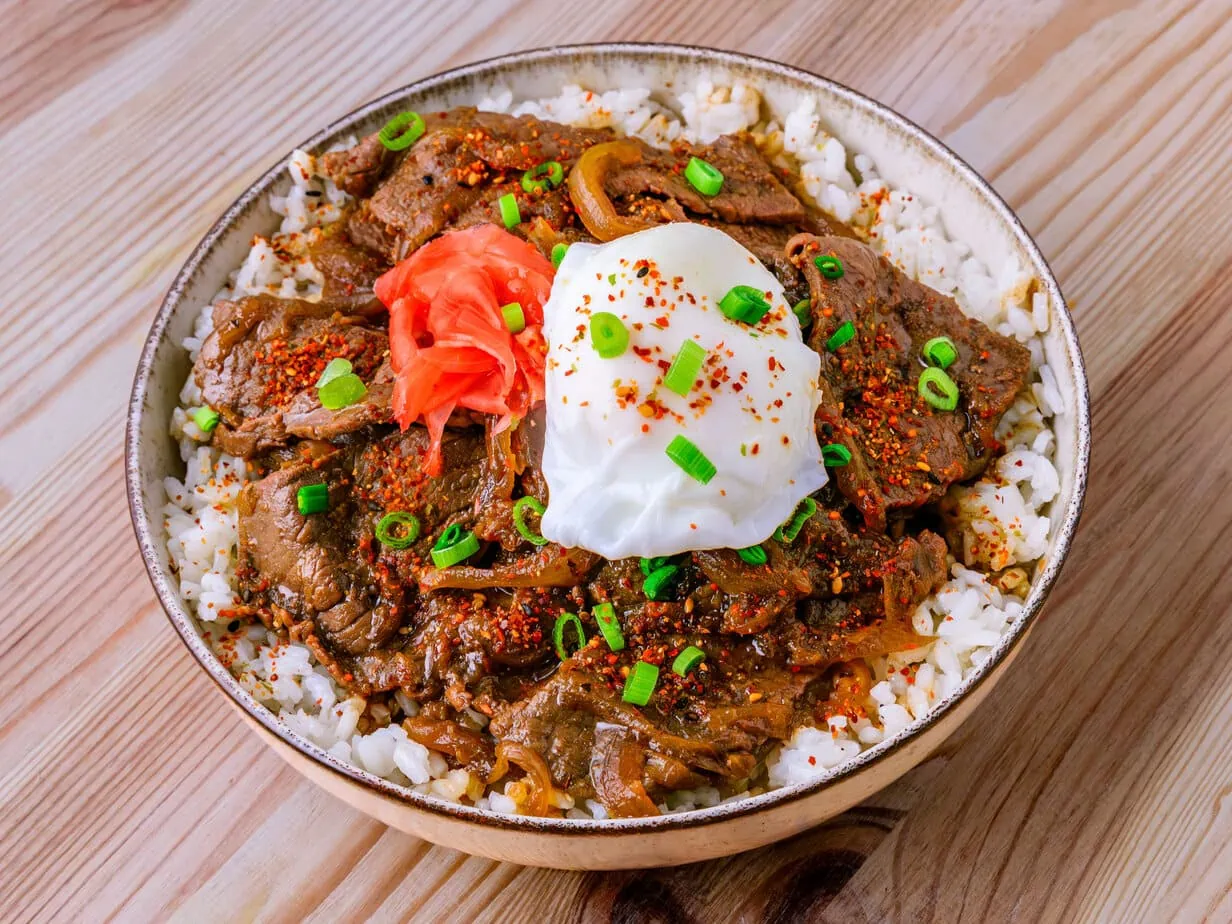
It’s nothing like the classic poached egg where the white is actually a bit firmer and the yolk creamy. To avoid disappointment: no, you won’t need to find a hot spring to cook your egg, the kitchen “spring” will be more than enough!
Cooking Onsen Tamago
Onsen Tamago has a very particular texture, and one sometimes wonders how to achieve this result. There’s actually a whole chemistry to follow behind this preparation. The yolk and egg white solidify at different temperatures, 70°C and 80°C respectively. And that’s precisely where you’ll need to be meticulous.
To get silky whites and relatively tender yolks, you’ll need to keep the water temperature between 65 and 68°C consistently for 30 minutes. Another ratio that works: 68 to 70°C for 20 minutes.
And now you’ll understand the connection with hot springs: this process mimics the temperature of Japan’s volcanic thermal waters.
History of Onsen Tamago
As you’ve understood, Onsen Tamago is typically Japanese, as it originally mobilizes the resources of its territory. Japan, being on the Pacific Ring of Fire, is full of hot springs and volcanoes.
The term “Onsen” generally means “hot spring”. So don’t be surprised if you happen to enjoy these Onsen without seeing a poached egg on the horizon. Onsen primarily represents a tradition that dates back to around 720 AD.
But there you have it, it’s a cultural practice that has also been applied in cooking. Onsen Tamago owes its name to the way this dish is prepared. An egg in thalassotherapy, yes.
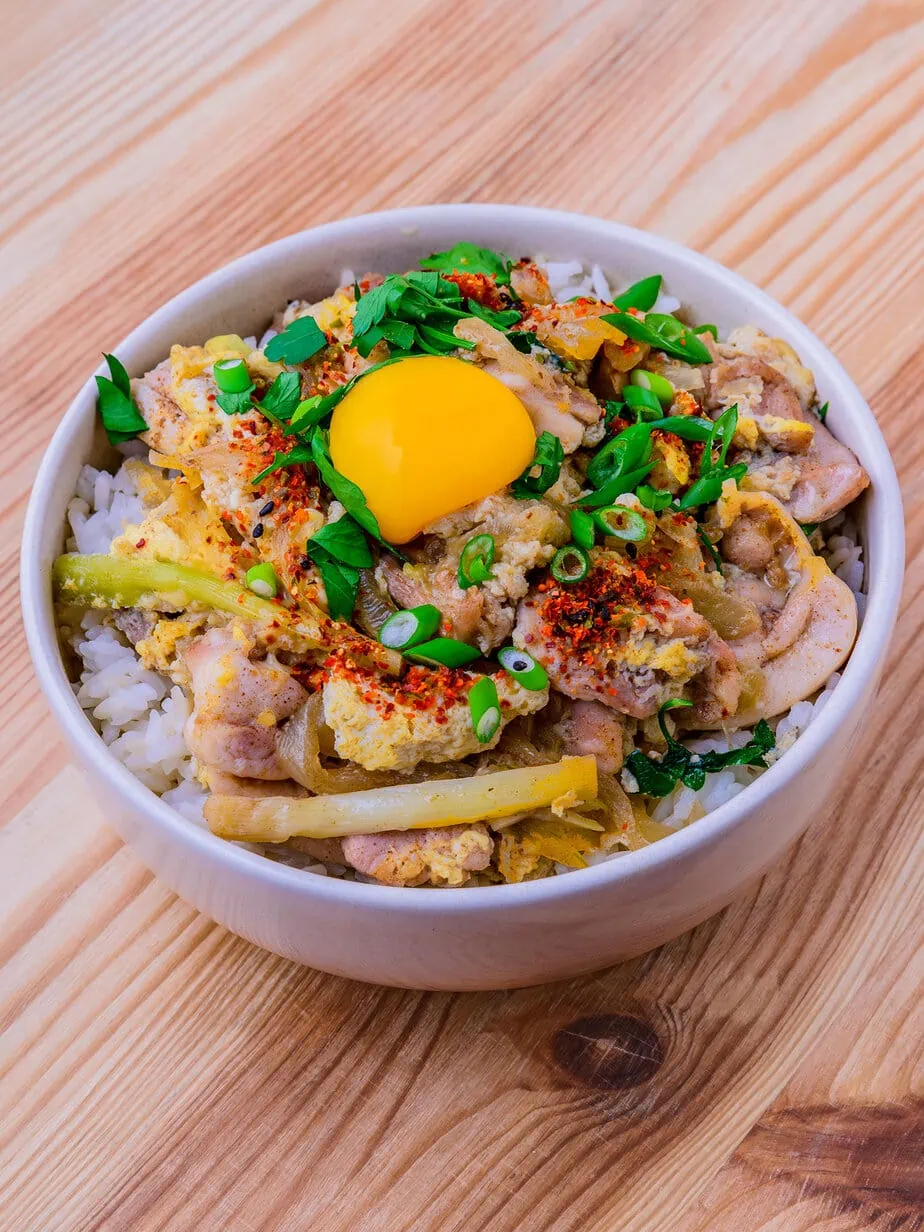
It is said to originate mainly from the hot spring towns of Beppu, on the Japanese island of Kyushu. The hot and stable temperatures of these waters were the ideal place for those who left their eggs there and found them perfectly cooked upon return.
It is also said that the first Onsen Tamago was made over 300 years ago, when a traveler accidentally left his eggs in a spring and found them cooked upon his return.
The main ingredients of Onsen Tamago
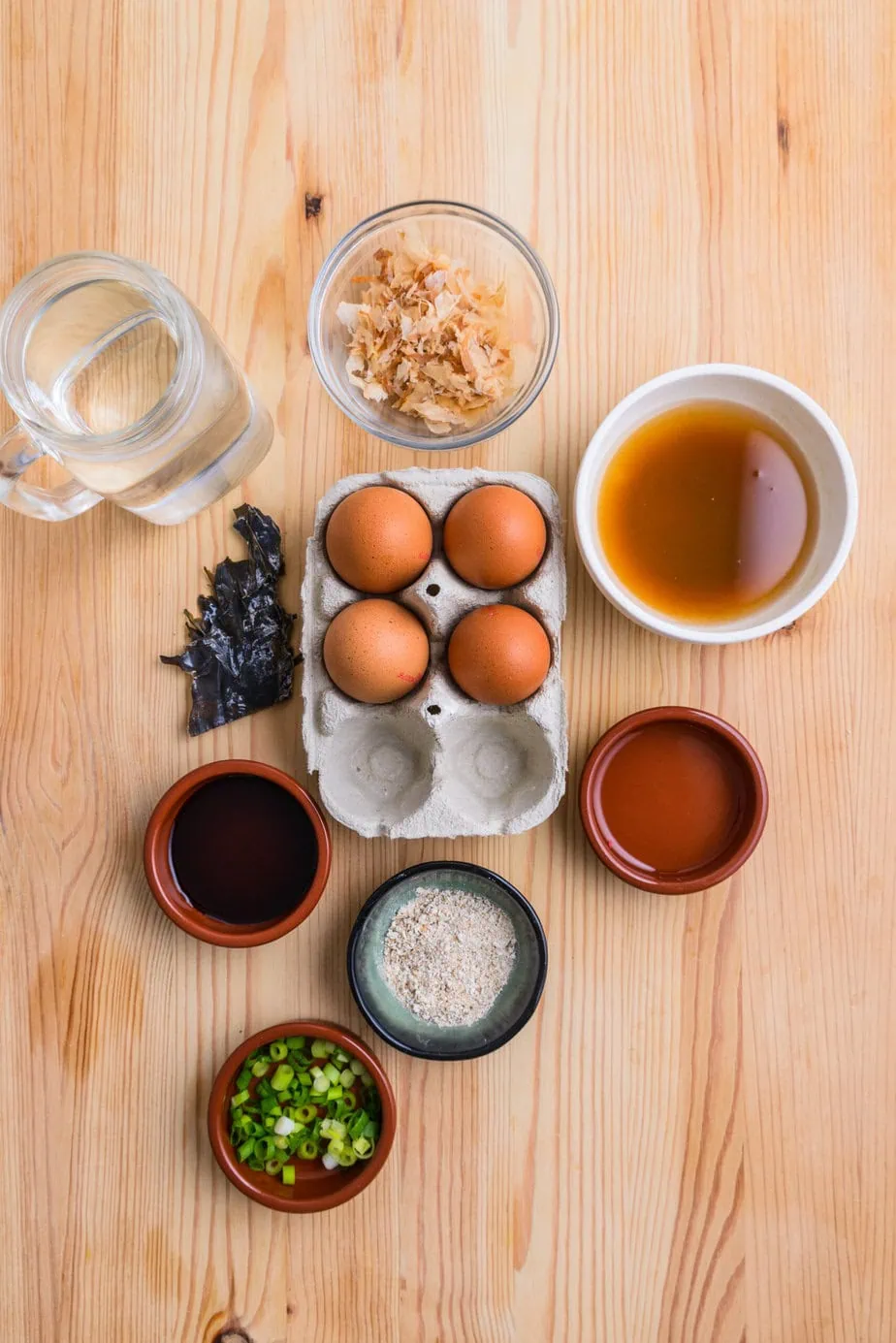
Eggs: Small or large, either works very well, but keep in mind that the smaller they are, the faster they cook. Above all, ensure the quality of the eggs, especially with this recipe.
Dashi: It adds a bit of body to the dish’s flavors. As eggs are already very mild, dashi adds a more intense flavor, rich in umami. In this recipe, you can use broth made from powdered dashi.
Mirin: Being very sweet itself, it brings out the sweet notes of dashi. It’s a seasoning often found in egg-based recipes; Tamagoyaki, ramen eggs or Ajitsuke Tamago, Tamago Sando…
Light soy sauce: Like mirin, it’s about balance. Light soy sauce is fluid and has an ideal salt content for Onsen Tamago so that it’s neither too sweet nor too salty.
Katsuobushi: These are dried bonito flakes. Katsuobushi has pronounced salty and smoky flavors. It’s somewhere between meat and fish in terms of taste.
Kombu: Like nori or aonori, it’s a type of seaweed highly prized in Japan. It’s also one of the elements that make up Dashi, which is itself the basis for preparing miso soup and cold soba noodles.
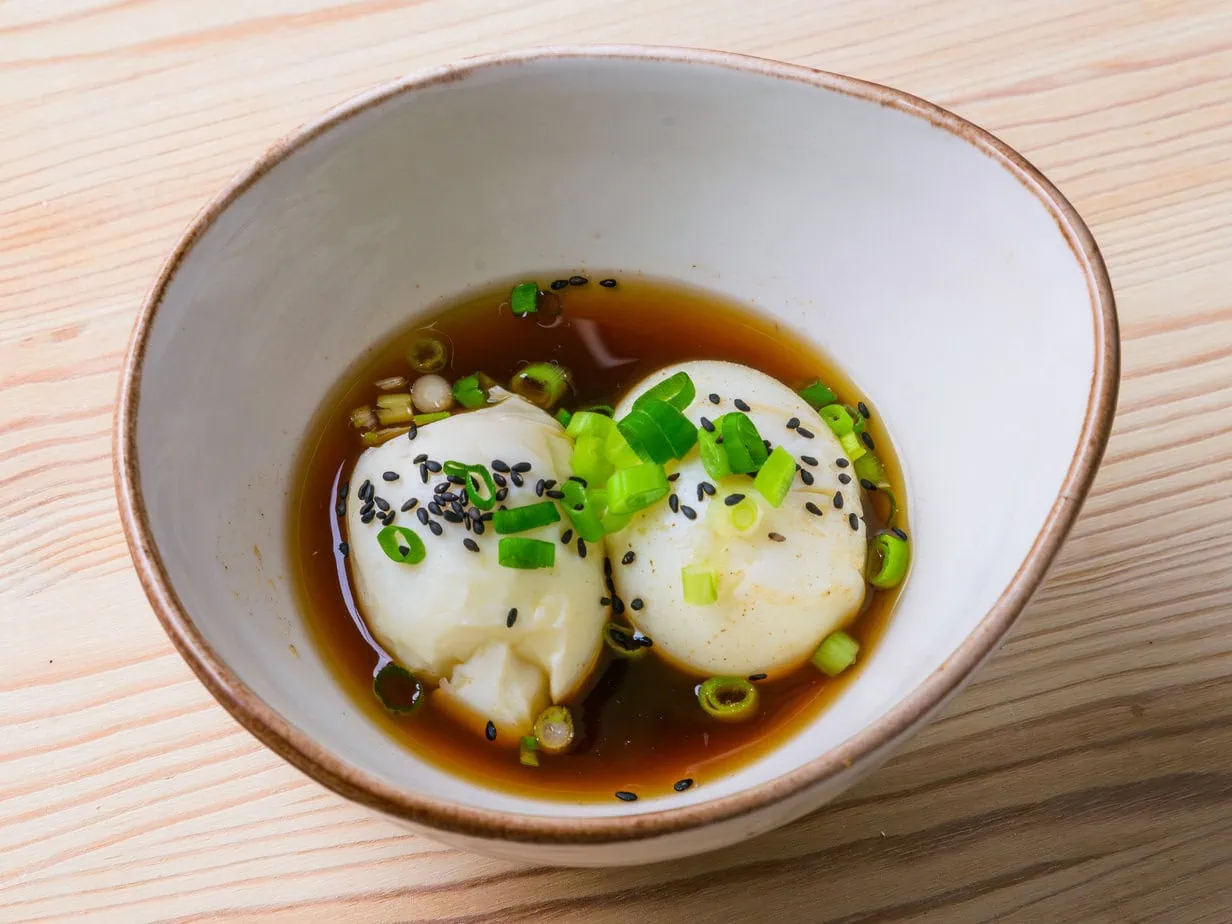
Onsen Tamago – Perfect Japanese Eggs
Ingredients
- 4 eggs at room temperature
- 1 liter of water
- 200 ml water cold
Sauce
- 100 ml of dashi you can make it from powdered dashi
- 1 tablespoon of mirin
- 2 tablespoon light soy sauce
- 1 teaspoon of shiitake mushroom dried, powdered, it grates easily
- 3 tablespoons of katsuobushi
- 1 piece of kombu
Trim
- Green onions thinly sliced
Instructions
- In a covered saucepan, bring the water to a boil1 liter of water
- Once the water is boiling, remove the pan from the heat and add cold water.200 ml water
- Add the eggs to the water, replace the lid and let them rest in the hot bath for 17 minutes off the heat.4 eggs
- Meanwhile, in another saucepan, mix the dashi, mirin, light soy sauce, and shiitake. Bring to a boil over medium heat.100 ml of dashi, 1 tablespoon of mirin, 2 tablespoon light soy sauce, 1 teaspoon of shiitake mushroom
- As soon as it boils, wait 1 minute then remove the pan from the heat
- Add the katsuobushi and kombu. Let it infuse for two minutes, then strain the sauce through a cheesecloth.3 tablespoons of katsuobushi, 1 piece of kombu
- Gently peel the eggs, taking care not to damage them.
- Place two eggs in each bowl, then pour the sauce until they are half submerged.
- Add a final touch with a garnish of green onions for a fresh and crunchy note.Green onions
Notes
Nutrition
Culinary sources
For this recipe, I based the egg cooking times on that of Just One Cookbook, which has written a very nice article on the subject
